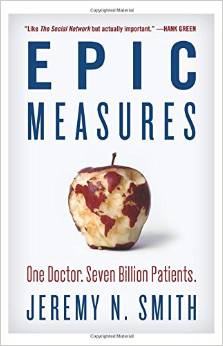
By Joy Portella, President, Minerva Strategies —
The Institute for Health Metrics and Evaluation (IHME) has been a Minerva Strategies client for more than two years. During my first meeting with IHME’s Communications Director Bill Heisel, we sat at a table with a pile of Excel spreadsheets in front of us. There were data as far as the eye could see and Bill was as excited as a little kid on Christmas.
“Look at all of these stories!” he exclaimed.
I was perplexed and my head ached a little. Where Bill saw stories, I only saw numbers in very small fonts.
But IHME data are chock full of stories – seven billion of them. Unlike most of Minerva’s clients, IHME’S line of business isn’t providing or even funding direct services. They are mapping the health of everyone on the planet, pinpointing which diseases, injuries, and corresponding risk factors kill us and make us sick, and how this whole health landscape is changing over time.
IHME’s work informs general publics and policymakers alike about where health systems are gaining ground, and where they’re falling short. IHME takes the idea of a “scalable solution” to a whole new level – shining a light on where investments and policy tweaks can help not just individuals, families or communities, but whole countries and our entire planet.
Somebody should write a book about this stuff.
This month, somebody did. Jeremy Smith’s new book Epic Measures tells the story of IHME’s Global Burden of Disease study (GBD) and its innovative measurements, as well as the professional struggles of IHME’s Director Dr. Christopher Murray.
Murray is a great character: The child of Kiwi doctors, he became the “pharmacist” of his parents’ makeshift medical operation in Niger as a tween, and authored his first peer-reviewed paper in The Lancet with family members at the age of 13. Brilliant and at times difficult, Murray became a doctor and public health expert who was convinced that traditional ways of measuring health progress and pinpointing health problems were grossly inadequate. Governments underreported or massively exaggerated numbers. Disease lobbies that yelled the loudest received the most attention and funding. Deaths were attributed to multiple causes and double counted. As a result, health investments were confused or paralyzed by a lack of reliable data.
Enter Dr. Murray and his Australian collaborator Alan Lopez in the early 1990s with a concept they called the Global Burden of Disease. The GBD sought to rank how different diseases, ailments, and injuries impact health, and rank countries in terms of health performance. As the GBD evolved, moving from the auspices of the World Bank to the World Health Organization to IHME, it has revolutionized health systems in places like Mexico and Australia, angered critics in countries such as Brazil and Malaysia, gained the admiration and financial backing of Bill Gates, and ruffled countless feathers of the global health establishment.
Today, GBD data is collected and analyzed by a consortium of more than 1,000 researchers in over 100 countries, led by IHME. These researchers bring together health data sources including government figures but also hospital and health clinic records, household surveys, census numbers, and “verbal autopsies,” retrospective interviews with family members of the recently deceased. GBD collaborators also pull data from the ten thousand articles published monthly that reference epidemiology.
There’s a lot more I could say about the GBD and Dr. Murray, but I don’t want to give away the book, a page-turner that could radically change the way you view health. The New York Times recently dubbed Epic Measures “Moneyball meets medicine” and if you read the last page wondering, “What’s worse, back pain or cancer?” the book has made its point.